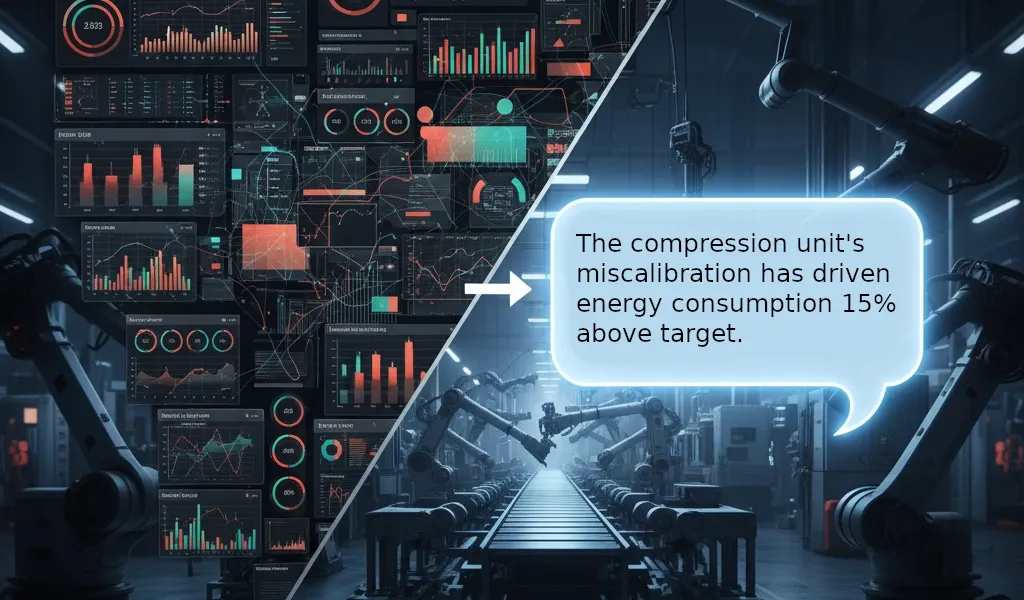⏱️ Approx. 4-minute read
From Dashboards to Dialogue: Human-Centric Energy Intelligence in the Factory
September 2025

Modern factories are full of dashboards — screens showing kilowatt-hours, trends, and Key Performance Indicators (KPIs) across departments. Yet, despite this data abundance, many teams still operate reactively. Dashboards inform people, but they rarely engage them. To close that gap, energy intelligence must become conversational — something workers can talk to, learn from, and act with in real time.
1) When Data Alone Isn’t Enough
Visualizing consumption doesn’t guarantee improvement. ISO 50001 emphasizes awareness and competence among everyone affecting energy performance. Human-centric energy intelligence brings that awareness into routines, without expecting operators to become analysts.
2) From Viewing to Conversing
A Digital Intelligent Assistant (DIA) transforms dashboards into two-way communication. Instead of navigating layered charts, a technician can ask:
"Why did the compressor use more energy this shift?"
The system replies with context: “Energy use increased 12% mainly due to higher production throughput and elevated inlet temperature.” No spreadsheets, no delays — just insight at the moment it’s needed.
3) Designing for the Factory Floor
- Keep questions simple — “Show me today’s top three SEUs.”
- Provide short, contextual answers.
- Use consistent vocabulary and units.
- Support multiple languages and roles.
4) Real-World Impact
- Faster response: deviations caught in minutes.
- Shared understanding: links cause and effect.
- Self-learning: new staff learn through conversation.
- Automatic reporting: interaction logs feed audit-ready summaries.
5) Challenges and Cultural Shift
- Noise and privacy concerns.
- Trust in automation — transparency matters.
- Gradual adoption across SEUs.
- Collaborative learning across roles.
6) Reflection
True digital transformation happens when people — not dashboards — become the interface. A human-centric EnMS built around dialogue nurtures awareness, competence, and ownership.